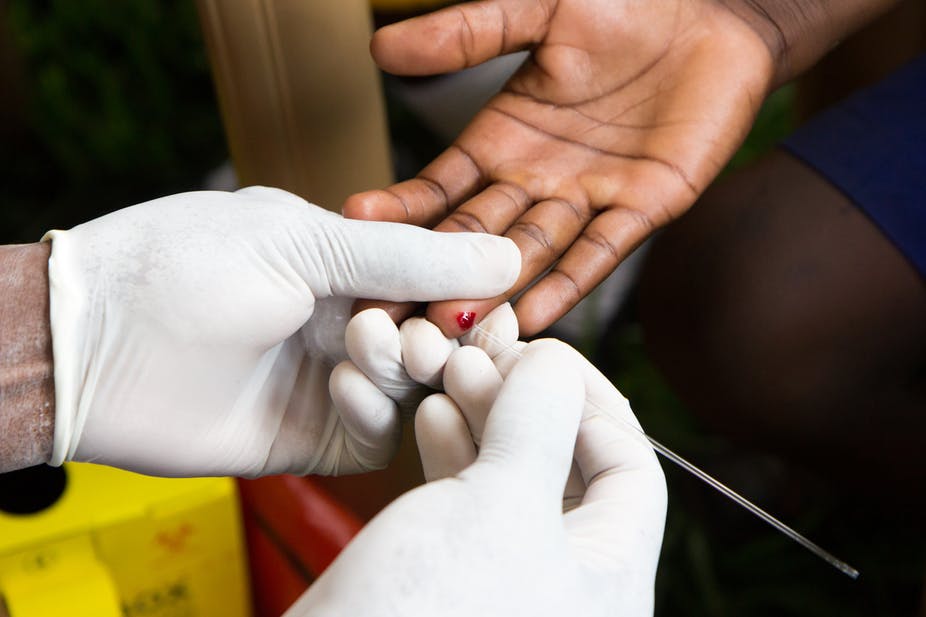The global AIDS response is in jeopardy unless urgent action is taken to address inequalities, says the United Nations (UN) Resident and Humanitarian Coordinator to Zimbabwe, Edward Kallon.
Progress in HIV/AIDS programming, which was already off track, said Kallon is now under even greater strain due to the Covid-19 pandemic and resultant crisis, disrupting HIV prevention and treatment services, schooling, violence prevention programmes and more.
His remarks follow World AIDS Day (WAD), celebrated on December 1 under the theme “Equality,” where the world agreed on a bold plan to end AIDS by 2030.
Unfortunately, AIDS remains a pandemic, as clinicians and activists have stated that the pandemic can only be overcome by moving quickly to eliminate inequalities.
In a speech commemorating World AIDS Day, Kallon stated earlier this year, an alarm was raised that the AIDS response was in jeopardy, citing a recent publication titled “Dangerous Inequalities,” which revealed current trends will not meet global targets to end AIDS.
“Only urgent action to tackle inequalities can get the AIDS response on track. It shows how world leaders can tackle those inequalities and calls on them to be courageous to follow what the evidence reveals,” he said.
“Given the current trajectory, the curve is not bending fast enough and risks an AIDS pandemic lasting for a decade. There is a need to move faster on a set of concrete actions agreed by UN member states to address the inequalities that are driving HIV.”
According to Kallon, countries must address the most severe inequalities impeding children’s and adults’ access to treatment.
“Only half of children living with HIV are on life-saving treatment, far behind adults where three quarters are receiving antiretrovirals. I am glad to note that Zimbabwe has joined the Global Alliance to end AIDS in children which is a strategic Initiative to end AIDS in children by 2030,” he said.
“Second, tackling the dangerous inequality is gender norms. Right now, around the world, an adolescent girl or young woman acquires HIV every two minutes. The focus of the HIV response is on women and children who are often viewed as victims. This understanding has led HIV and AIDS public health prevention and treatment campaigns to focus on women and children in this setting.”
As a result, men, according to Kallon, have received significantly less attention and few targeted HIV prevention and treatment programmes.
There should be access to quality education for all, said Kallon, “to enable girls to complete secondary and tertiary education, which reduces their vulnerability to HIV infection by up to 50 per cent.”
More concerted efforts is needed to deal with stigma and discrimination reduction programmes to meet the target of ending AIDS by 2030, said the diplomat, highlighting that the UNAIDS Global AIDS Strategy (2021-2026) recognises these vices as a major cause of inequalities to access services.
“The Network of PLHIV (ZNNP+) has just completed a Stigma study which has highlighted that 69.7 percent of people living with HIV still experience various forms of stigma and discrimination compared to 65 percent in 2014.”
Meanwhile, Kallon congratulated Zimbabwe for decriminalising HIV transmission, which was ineffective, discriminatory and undermined efforts to reduce new HIV infections.
“There is need for community-led and community-based infrastructure as part of a strong public health system, underpinned by robust civil society accountability,” he noted.
Kallon said since 2010, in Zimbabwe new HIV infections have declined by 70 percent from 75 000 to 23 000 in 2021.
UNAIDS issued a new set of ambitious targets in December 2020, calling for 95 percent of people living with HIV to know their HIV status, 95 percent of people with diagnosed HIV infection to receive sustained antiretroviral therapy, and 95 percent of people receiving antiretroviral therapy to have viral suppression by 2025.
“Zimbabwe has achieved the first and second 95 percent but is on track to achieve the third 95 with 95.6 percent, 95.6 percent and 93.2 percent because of good practices that have increased the uptake of HIV prevention, testing, and treatment services,” he said.
Zimbabwe is also the first African country and third in the world behind Australia and the United States to approve CAB-LA, a long-acting injectable medication that prevents HIV and is recommended by the World Health Organisation for those at high risk of contracting HIV, according to the UN resident coordinator.
“We can end AIDS. And yet, in just the last year alone, 20 000 people died of AIDS-related illnesses and 23 000 people became infected with HIV. Women and girls accounted for 60 percent of all new infections in 2021.Why are people still dying of AIDS? Why are there so many new HIV infections each year?” he questioned.

